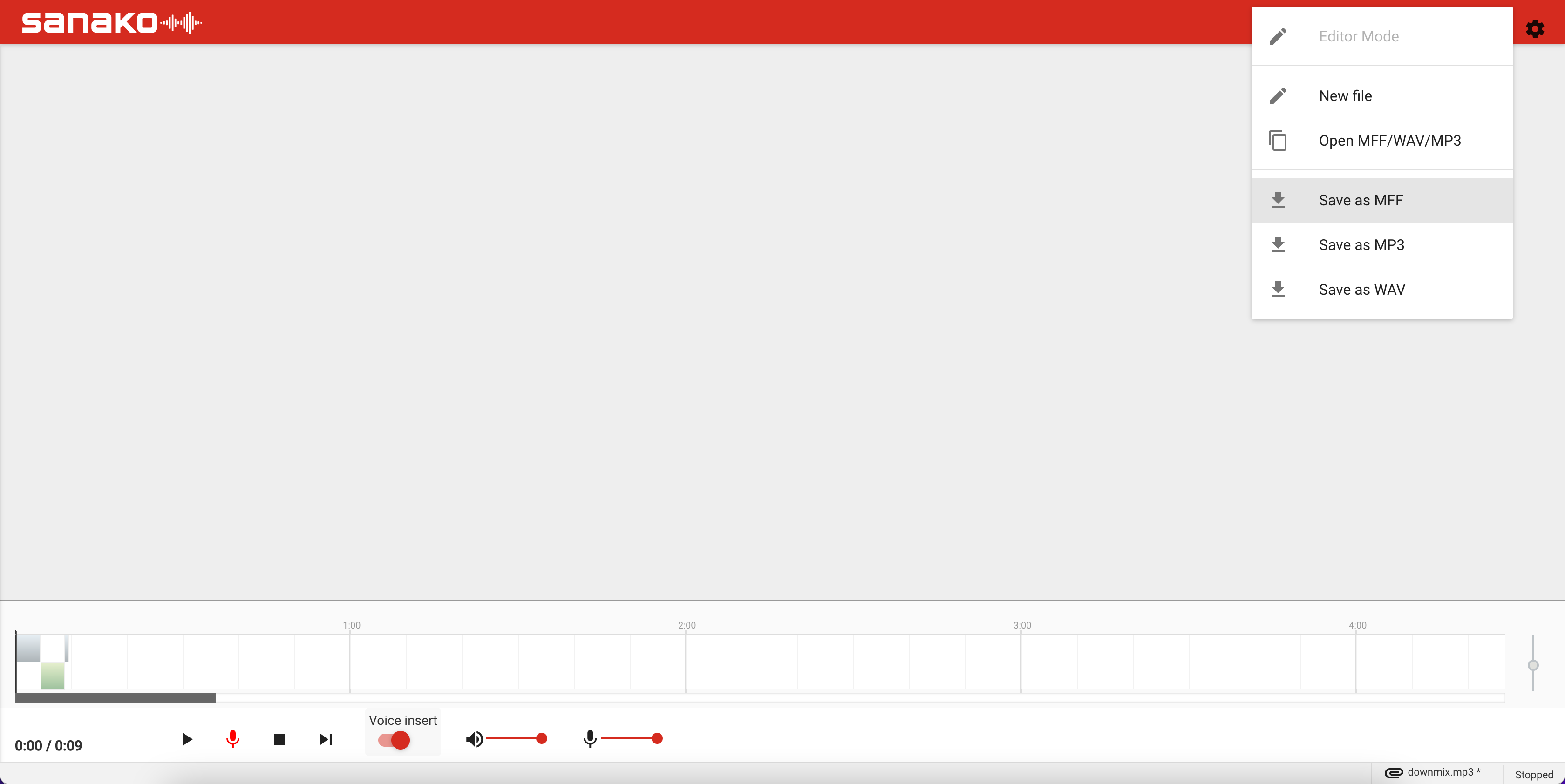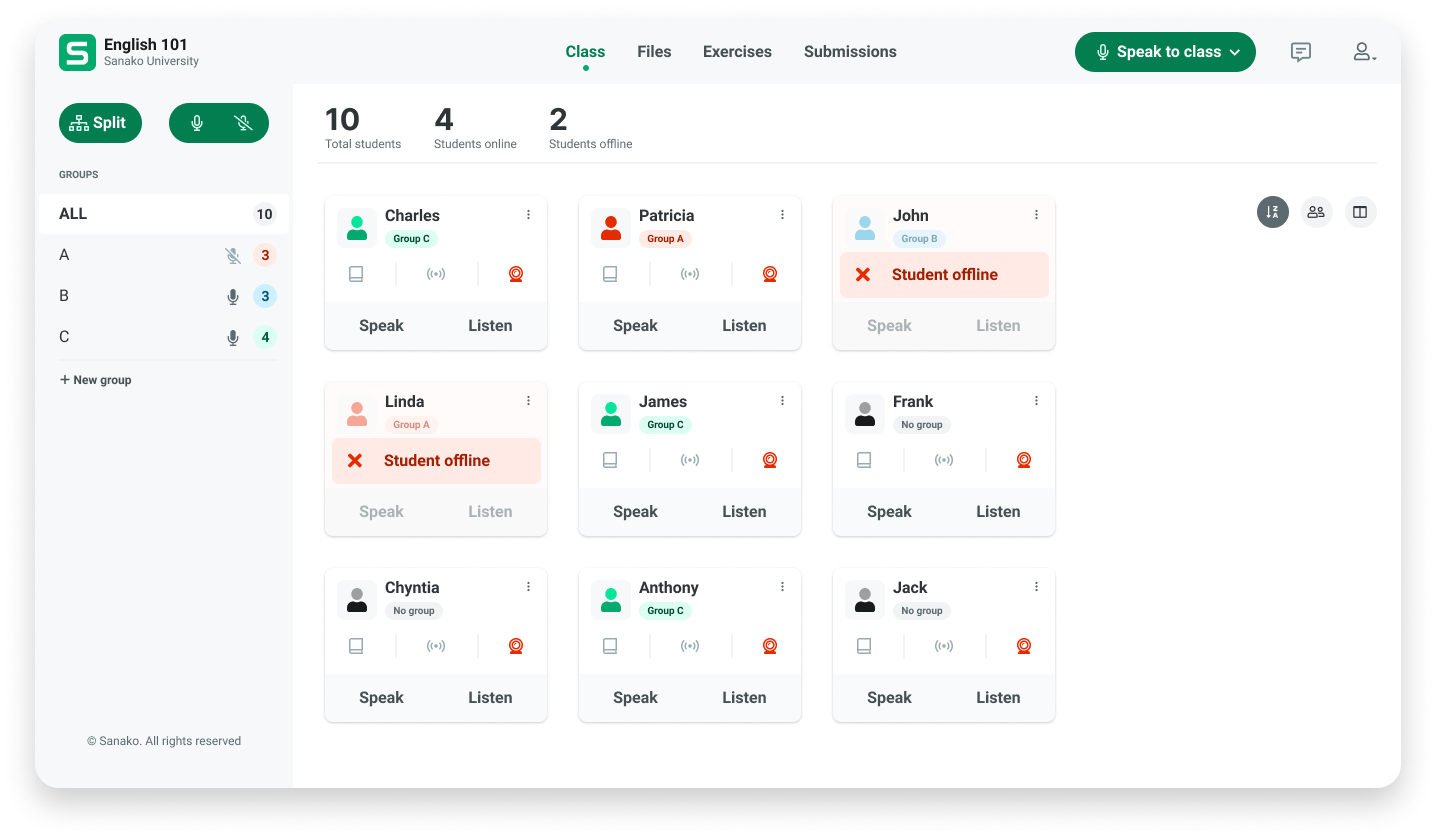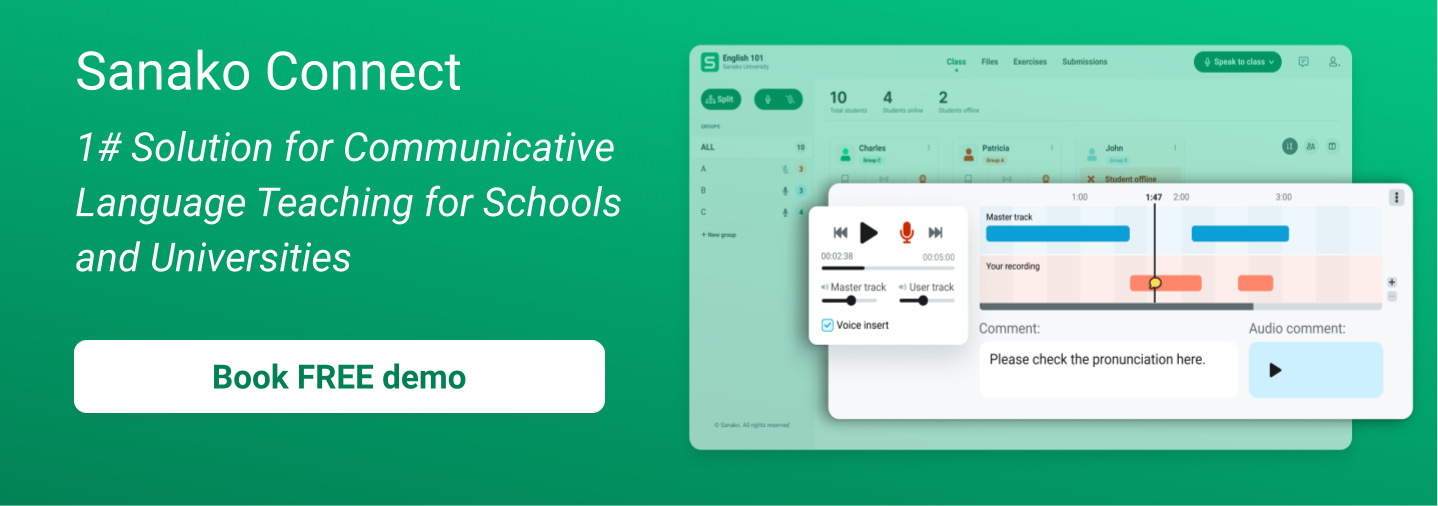Whether students are learning in class or at a distance from the institution via online, language teachers still need to be able to work on developing their core language skills. But how can teachers help students to improve their speaking skills when learners are not co-located? What are the best online tools for educators to use to facilitate conversation practice with other students or with native speakers?
To try and help educators to make smart, informed purchasing decisions, we’ve looked at three popular tools on the market (Vocaroo, Zoom and Sanako Connect) to consider their suitability for creating and assigning speaking-based language learning activities.
Vocaroo – A simple recorder to practice speaking skills
Vocaroo is a very simple website that allows users to record, send, and download voice recordings. There’s no complicated technology or login process to navigate and students don’t need to register to access the site and its functionality. They simply click a button and start recording. Students can then easily listen back to their speech and re-record if needed. Once satisfied, the recording can be saved and a link shared with their teacher.
Notably, the site is free to use, there’s no limit on the amount of content that can be created and it can be easily accessed via an online browser. However, Vocaroo is flash-based and it may not be accessible from all mobile devices. Furthermore, the website provides no special options for users with hearing or visual disabilities.
It is a good tool for easy single track voice recording on the fly. It would work well with a range of different speaking activities: learners can record and listen to themselves to identify words and phrases that need improved pronunciation. It can also be useful when students practice and rehearse speeches and presentations.
Whilst it’s easy for educators to listen to the file they have been sent, it’s not possible for them to record comments or feedback at the same time. This will require them to then send back a separate audio or text file to provide feedback. And this gives an indication of its biggest drawback – aside from recording and sharing voice messages, there’s little else of value for educators. It cannot work with prompts and there’s no facility for recording or linking to assignments.
Sanako also offers a similar free to use tool for anyone to use. Sanako Web Recorder can be found from https://recorder.sanako.com/ and it works only on Google Chrome browser. In addition to simply recording students’ voice and saving those as MP3 or other audio files, the Web Recorder allows the use of two-track recording. This means that students can also listen an audio master track and record their own voice as a second audio track on the meaningful spots on the master audio track. The most common use case for this feature is completing speaking-based assessments and task where the master track is an audio clip given by the teacher or simply a recording of the teacher’s voice. The master track can for example contain pronunciation tasks or authentic foreign language audio material based on which the student needs to record their own answers.
The biggest advantages of these simple and fast recording tools is that they allow important self-evaluation as students can record their own voice and listen back to it, and in addition they can share their recordings for their teacher to review and comment on.
Sanako Web Record looks simple and clean. The focus is on giving students an unlimited access to simple recorder and a more advanced two-track recorder which allows them to insert their own answers on any audio master file.
Zoom – General tool for synchronous online lessons
Few brands or businesses have grown as quickly as Zoom in recent years. The impact of the global pandemic has fundamentally changed how we communicate, learn and work and Zoom has been a huge beneficiary of that shift. However, how suitable is it as a tool for building English and foreign language speaking skills?
Of course, Zoom is able to connect learners and language educators outside of the classroom and it’s hugely helpful in facilitating remote and hybrid teaching. Classes are able to see and hear each other and can easily communicate through the chat functionality.
Zoom is also a familiar tool for students to access and use and it’s easy for educators to set up and administer their lessons. As part of that students can talk and work individually, in pairs, in groups or all together. This approach enables teachers to recreate the atmosphere of a real classroom and students are able to interact and communicate virtually. Teachers can drop in and drop out of the different breakout rooms – all of which can be recorded for future reference.
It’s important for all teachers to remember that online teaching is less about being the “Sage on the Stage” and more about being the “Guide on the Side”. Zoom helps facilitate this by enabling all students to share their screens and interactive whiteboards so that they can complete an activity together or collaborate to complete a task.
However at its heart, Zoom (and its myriad of competitors) are just general purpose video conferencing tools. Their application in education is generic rather than specific and there’s no specific tools focused on language teaching and learning. Zoom is used mostly in synchronous lessons and it is not build to manage asynchronous learning at all.
Sanako Connect – Language teaching hub designed for language teachers
With Sanako Connect, the situation is completely different. Language education is our sole focus and is the only market we work in. Connect has been specifically designed for use by language learners and teachers and all of the product features support this objective.
As such, teachers can control all elements of an online speaking lesson. This includes what students see and do as well as managing the pace at which they work through the lesson. Students don’t need to worry about finding the right resources or clicking on the right button/links, everything is revealed to them by the teacher at the right time. Additionally, self-learning spaces can also be created within Connect, which students can use at any time to work through learning activities at their own pace. Connect’s full functionality is available both inside and outside the classroom, enabling students to work in both synchronous and asynchronous timeframes.
This is the live lesson dashboard inside Sanako Connect. This view allows the teacher to monitor and manage each student who has joined the class. Teacher can for example launch exercises, split students into groups, and speak with or listen each individual student.
Language educators can easily divide students into pairs or small groups for online conversation practice. In Connect, each group of students can talk simultaneously without distracting each other. Teachers can listen in or talk with different groups to assist as required. All of these separate group conversations can be easily recorded and reviewed by both students and teachers. Furthermore, all student recordings are conveniently collected together within the solution and can be easily downloaded for offline review / sharing.
This is the two-track recorder function inside Sanako Connect. Teachers can insert time-coded feedback in text or speech into students’ recordings. This creates an effective feedback loop that helps students to make corrections in their speaking and pronunciation.
Connect also combines assessment and teaching functionality. It’s easy-to-use activity / exercise editor enables educators to quickly populate pre-prepared, multiple-choice quizzes or single answer tests. It also offers single and two-track recording, which brilliantly supports model imitation, pronunciation and translation exercises.
Perhaps most importantly, Connect also helps teachers to better support learners through constructive and supportive feedback. This can be supplied to individual students or to whole classes via a text or audio message. Oral feedback can also be recorded and attached to very specific areas of the student’s own oral submission to celebrate high performance or to show where more work might be needed.
Including Connect’s focus on facilitating speaking and listening practice, it’s this combination of product features that makes Sanako Connect the speaking tool of choice for great language teachers worldwide.
If you are interested in learning more about Sanako Connect and would like to see how it could develop your students’ English and foreign language speaking skills in your school, then book a FREE remote demo now to see it in action.




